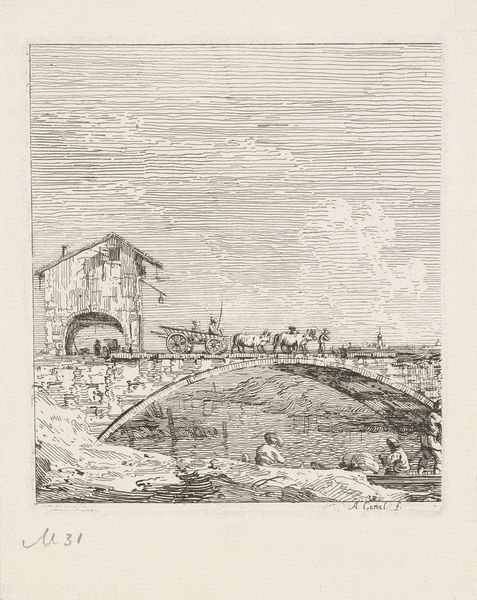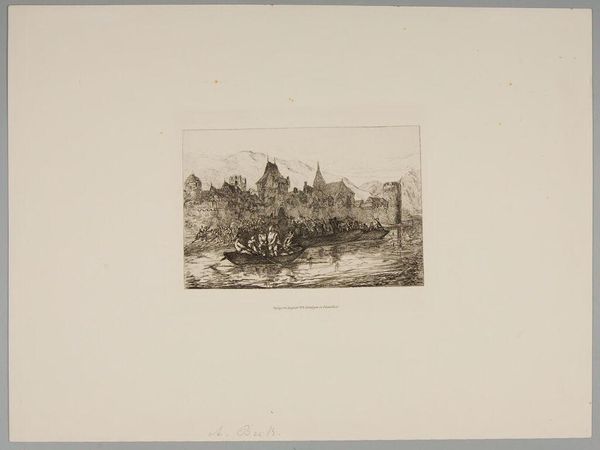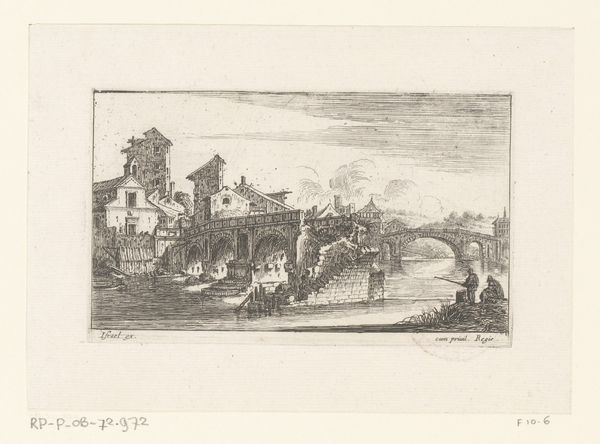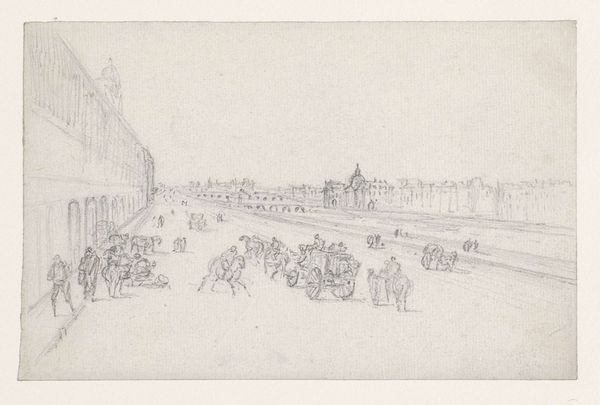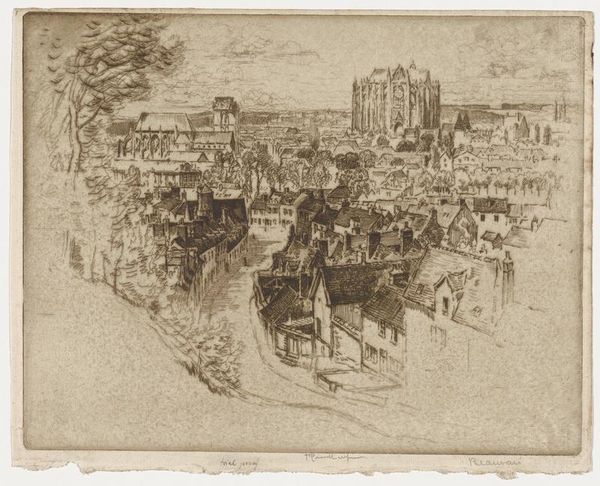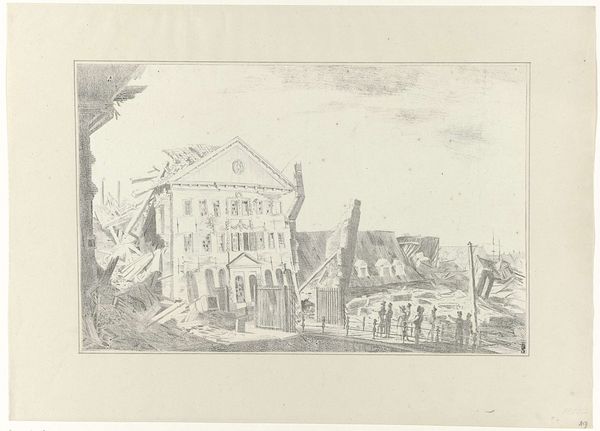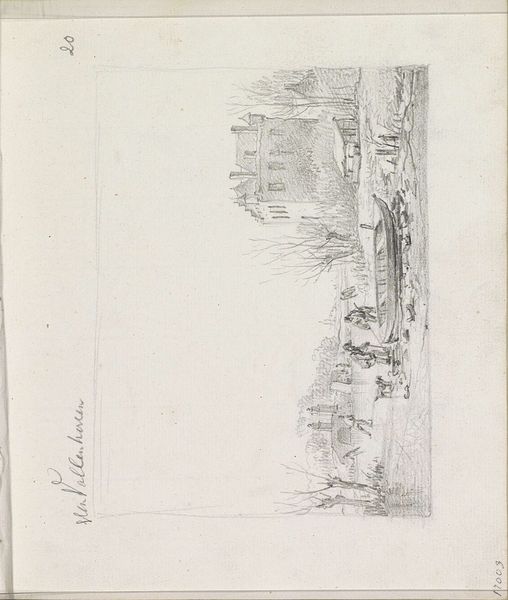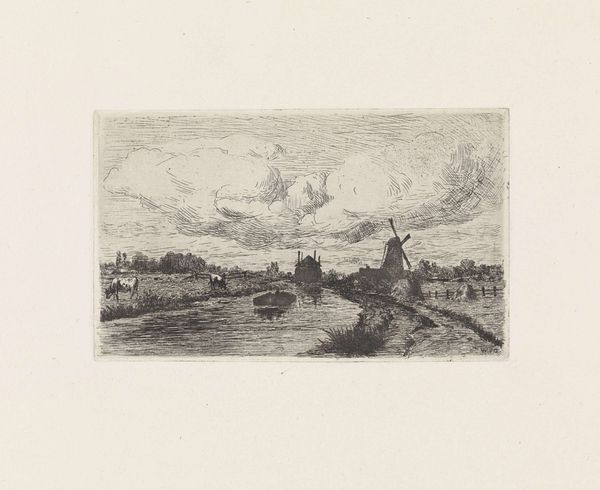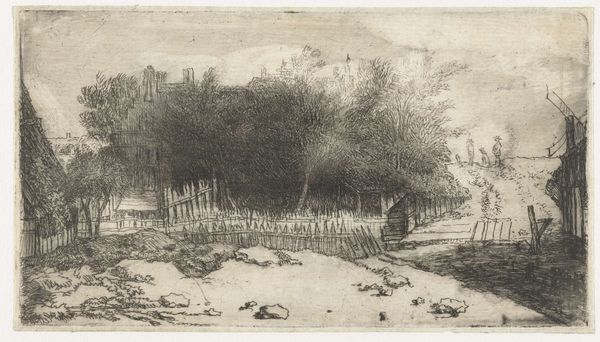
print, etching
#
venetian-painting
#
baroque
# print
#
pen sketch
#
etching
#
landscape
#
cityscape
#
realism
Dimensions: height 144 mm, width 211 mm
Copyright: Rijks Museum: Open Domain
Curator: Canaletto's etching, "Terras," likely created sometime between 1707 and 1768, presents a detailed cityscape view. It’s quite small, roughly 14 x 21 cm. Editor: My immediate impression is one of ordered chaos, almost oxymoronic, isn't it? There's an intricate dance of line and texture but a tangible mood of the city despite the monotone nature of the print itself. Curator: Yes, look at how he manipulates line weight. The buildings closer to the viewer boast bolder, more definite strokes. Note the use of hatching and cross-hatching; it is all meticulously rendered to give us a sense of volume and depth. Notice the interplay of light and shadow; how crucial that is in shaping form. Editor: It's also interesting to think about how these scenes would function as commodities. These weren't neutral depictions; prints like "Terras" presented carefully crafted images of Venice to foreign visitors, shaping perceptions and fueling the tourist industry, not so unlike how pictures shared through social media impact our experience today. Curator: Indeed. And consider his skill. The baroque sensibility in which drama and dynamic tension takes shape is reflected through how carefully chosen is the viewpoint and also, the density of lines increases toward the center to heighten our attention to these spatial arrangements and his use of linear perspective is skillful. Editor: Absolutely. It invites a deep dive into 18th-century Venice. He's presenting an idea of Venice; an exciting, busy metropolis that also somehow seems timeless despite its very contemporary hustle and bustle. It makes one want to reflect about how society is constructed in relationship to cityspace. Curator: Quite. It showcases his masterly understanding of compositional elements. His technique creates a powerful urban vignette, drawing us to focus our vision right at the heart of that construction that mirrors our visual understanding and his artistry. Editor: A seemingly quiet snapshot becomes so evocative upon closer inspection and analysis. These details reveal a profound historical record—an important aspect of art we cannot forget. Curator: Agreed. It's rewarding how his rigorous structuring serves his expressive ends so brilliantly, rendering his visual arguments far stronger than anything else he might have otherwise achieved.
Comments
No comments
Be the first to comment and join the conversation on the ultimate creative platform.

